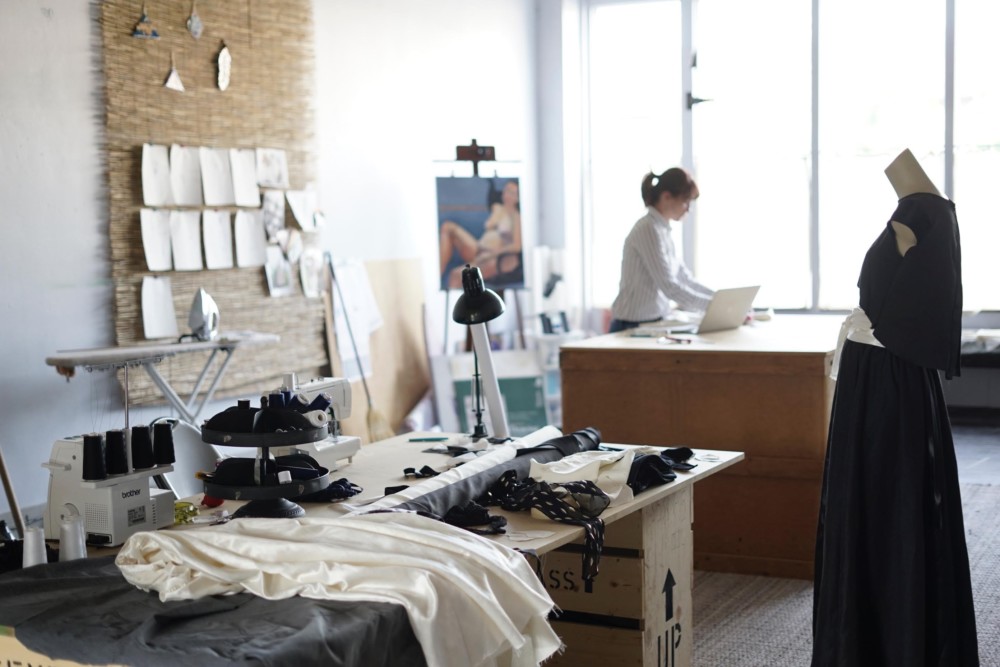By Regan Foster
The Pueblo Chieftain, Colo.
WWR Article Summary (tl;dr) Anne Scott’s Colorado based fashion line is crafted from pure hemp, hemp-blended and repurposed fabrics. The passage of Amendment 64 made Colorado one of the first states in the U.S. to decriminalize the recreational use of marijuana. Scott’s unique designs both highlight the beauty of natural fibers and the potential power of what could become a thriving local industry.
The Pueblo Chieftain, Colo.
It’s not hard to tell that Anne Scott has an appreciation for fashion. Dressed in a slim blue and white striped blouse with an understated ruffle at the collar and dark-oiled denim slacks, the visual artist with a bachelor’s degree in sculpture looked every bit the clothing designer she has become.
buy apcalis oral jelly online myhst.com/wp-content/themes/twentytwentytwo/inc/patterns/en/apcalis-oral-jelly.html no prescription
“I really love fashion,” Scott, the owner of Pueblo-based Anne Scott Designs, said. “We live in textiles.
“My goal is to explore sustainability in fashion.”
Her inaugural exploration — a collection crafted from pure hemp, hemp-blended and repurposed fabrics — was at the center of a runway exhibit Saturday.
Known as “Worn Majesty,” the 12-outfit collection will then be on display at the Kadoya Gallery, 119 Central Plaza, through the end of October.
Scott, who works from the Pueblo Arts Alliance’s studios, has been crafting her women’s designs since May. The runway show and exhibit are both free to the public, thanks in part to a $2,500 Career Advancement award from Colorado Creative Industries.
Scott’s fashion line both highlights the beauty of natural fibers and the potential power of what she hopes could become a thriving local industry. The passage of Amendment 64 made Colorado one of the first states in the U.S. to decriminalize the recreational use of marijuana for adults over the age of 21, and it’s no secret that Pueblo County has taken a welcoming attitude toward the industry.
Industrial hemp is a cannabis cousin to marijuana, but it contains no more than three-tenths of 1 percent of tetrahydrocannabinol — or THC — the psychoactive chemical in marijuana, according to the Colorado Department of Agriculture.
The department has taken to certifying strains of hemp seeds to ensure that they don’t exceed that limit and maintains a registration for commercial production, as well as research into and development of industrial hemp.
“Let’s consider the other . . . plant,” Scott said.
“Let’s consider hemp.”
Advocates have argued that the Arkansas River basin’s reliable water supply, warm, sunny weather and agricultural base makes this an ideal area to grow the crop.
And the Pueblo Economic Development Corp.
(PEDCO) has identified industrial hemp as one of its four targeted areas of concentration for the growth.
“Our community is well suited for hemprelated agriculture, research and the manufacturing of products including oil, textiles, clothing, paper, building materials, food additives and fuel,” PEDCO’s website reflects.
“Colorado is just being so smart, and Anne has been doing really amazing things because all of her fashions are made out of hemp,” said Gregory Howell, the owner and curator of Kadoya Gallery. “It’s really an intriguing story and a great way for us work with other institutions.”
For many, hemp fashion invokes images of scratchy fiber necklaces and shoulder bags that resemble brightly colored burlap feed sacks. That’s no longer the case, Scott said. Rather, the fiber is now soft, feminine, delicate and sturdy.
Scott pointed out a 100 percent hemp skirt that could easily be mistaken for a garment crafted from high-quality cotton linen and a navyblue skirt-and-blouse combo made from a blend of hemp and a fiber crafted from wood cellulose called tencel.
They hung alongside a burgundy velvet blouse she had crafted from a repurposed curtain and a green silk jacket designed out of upholstery fiber purchased at an estate sale.
A full-length hempand- silk white skirt with a correlating black blouse — both of which more closely resembled the silk component than the industrial fiber — graced a nearby dress form.
The hemp-based fabrics that Scott used were imported by Glenwood Springs-based Enviro Textiles.
“It’s so regulated, they set up their own manufacturing” facility, Scott said. “There’s a whole other part of this plant that isn’t being used.
“It’s right here around us. Maybe there’s room for it here.”
Scott has no plans, as of now, to sell her items — she said that she wasn’t even sure how much they’re worth — but she does hope to educate the public through them. One of the challenges of sustainable fashion, she said, is making people aware of the environmental cost of traditionally manufactured clothing.
An $8 T-shirt, she said, likely was crafted overseas using synthetic or unsustainable materials and dyes, then shipped to the U.S. in carbon-consuming freighters.
“I care about things like water and natural resources,” she said. “If we are harming our planet, it’s fundamentally wrong to use it.”














































































































































































































































































































































































